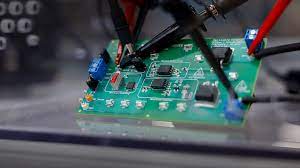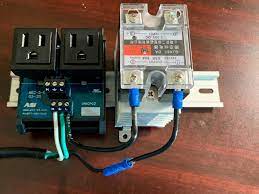Our News
Contact Us
- Tel:0086-135 8771 2673
- Tel:0086-135 8771 3265
- Email:[email protected]
- Address:No.666 East Jiaotong Rd.,Wu'niu Street,Yongjia,Wenzhou,Zhejiang,China
The Basics of SSRs (Solid-State Relays): The Switching Device
News | Jul 15,2023
In the realm of modern electronics and automation, the efficient control of electrical circuits is of paramount importance. As technology continues to evolve, so does the need for advanced components that can handle switching tasks with precision and reliability.
Enter Solid-State Relays (SSRs), a crucial innovation that has transformed the way we control electrical currents. This essay delves into the fundamental aspects of SSRs, unravelling their inner workings, applications, advantages, challenges, and the impact they have on various industries.
Understanding the SSR: Beyond Mechanical Switching
Solid-State Relays (SSRs) stand as a remarkable departure from traditional electromagnetic relays, heralding a new era of switching devices. Unlike their electromechanical counterparts, SSRs rely on semiconductor technology to achieve the same goal: the controlled switching of electrical loads.
By leveraging the principles of optoelectronics and semiconductors, SSRs eliminate the need for moving parts and offer a host of advantages that cater to modern demands.
At the core of an SSR lies a combination of optoelectronic components and semiconductors. The fundamental operation of an SSR revolves around an optoisolator, a light-emitting diode (LED), and a photosensitive transistor or thyristor.
When an input signal is applied to the LED, it emits light, which triggers the photosensitive component. This optical coupling between the input and output sides effectively isolates the control circuit from the load circuit, minimizing interference and enhancing safety.
Advantages of SSRs: Unveiling the Benefits
The rise of SSRs is attributed to the multitude of benefits they offer, making them indispensable tools in various applications. One of the most prominent advantages is their swift response time.
Traditional relays, due to their mechanical nature, exhibit delays in switching, limiting their effectiveness in high-speed operations. SSRs, devoid of moving parts, switch almost instantaneously, making them ideal for applications that demand rapid responses, such as in industrial machinery and automation.
Another noteworthy benefit is longevity. Mechanical relays often succumb to wear and tear due to the constant movement of components. SSRs, with their solid-state design, boast an extended lifespan, making them suitable for applications that require prolonged usage without the need for frequent maintenance or replacement.
Reliability is a hallmark feature of SSRs. Their solid-state construction eliminates the risk of contact bounce, a phenomenon common in mechanical relays that can lead to erratic behavior. SSRs guarantee consistent and accurate switching, critical in precision applications where timing and sequencing are crucial.
Furthermore, SSRs are virtually noiseless. The absence of moving parts eliminates the characteristic clicking sound associated with mechanical relays, making SSRs suitable for noise-sensitive environments, such as medical equipment or recording studios.
Applications: SSRs in Diverse Industries
The versatility of SSRs is reflected in their wide-ranging applications across various industries. In industrial automation, SSRs find utility in controlling heaters, motors, and solenoids, streamlining processes and ensuring precision.
Their rapid switching capabilities make them indispensable in applications such as packaging, robotics, and conveyor systems, where precise timing is crucial for efficient operation.
In the realm of home automation, SSRs facilitate the remote control of lighting, heating, and cooling systems. Their ability to switch without arcing or contact bounce ensures seamless operation and enhances energy efficiency, contributing to reduced utility bills and a smaller environmental footprint.
SSRs have also made a significant impact in the automotive sector. From electric vehicle charging systems to engine control units, SSRs offer reliability and performance advantages in critical components, ensuring smooth operation and optimal efficiency.
The medical field benefits from SSRs in applications such as diagnostic equipment and patient monitoring devices, where accuracy, speed, and noise reduction are imperative.
The ability of SSRs to handle precision control without the risk of mechanical wear and tear aligns perfectly with the stringent demands of the medical industry.
The Environmental Edge: SSRs and Energy Efficiency
As the world grapples with environmental concerns, the role of technology in energy efficiency becomes increasingly important. SSRs play a vital role in this aspect, contributing to energy conservation and reduced wastage.
Their fast and accurate switching minimizes energy consumption by efficiently controlling the operation of electrical loads. Whether it’s turning on/off lighting systems or regulating the temperature of heating and cooling devices, SSRs are instrumental in optimizing energy usage.
Challenges and Future Outlook
While SSRs offer a plethora of advantages, they are not without their challenges. One significant challenge is heat dissipation. The solid-state components within SSRs generate heat during operation, and if not managed properly, it can affect their performance and longevity.
Proper thermal management techniques are essential to ensure optimal SSR operation, especially in applications with high current loads or prolonged usage.
Looking ahead, the future of SSRs is promising. Advancements in semiconductor technology are likely to lead to even more compact and efficient SSR designs.
Enhanced thermal management techniques and integration of advanced control features are expected to further expand the scope of SSR applications, making them even more versatile and capable of handling a wider range of switching tasks.
Conclusion
Advances in technology have revolutionized the way we control circuits, and solid state relays (SSRs) are at the forefront of this revolution. By utilizing optoelectronic and semiconductor principles, SSRs provide fast switching, reliability, lifetime and energy efficiency.
Their versatility spans industries from industrial automation to home control systems, helping to improve precision, performance and energy savings.
--- END ---


